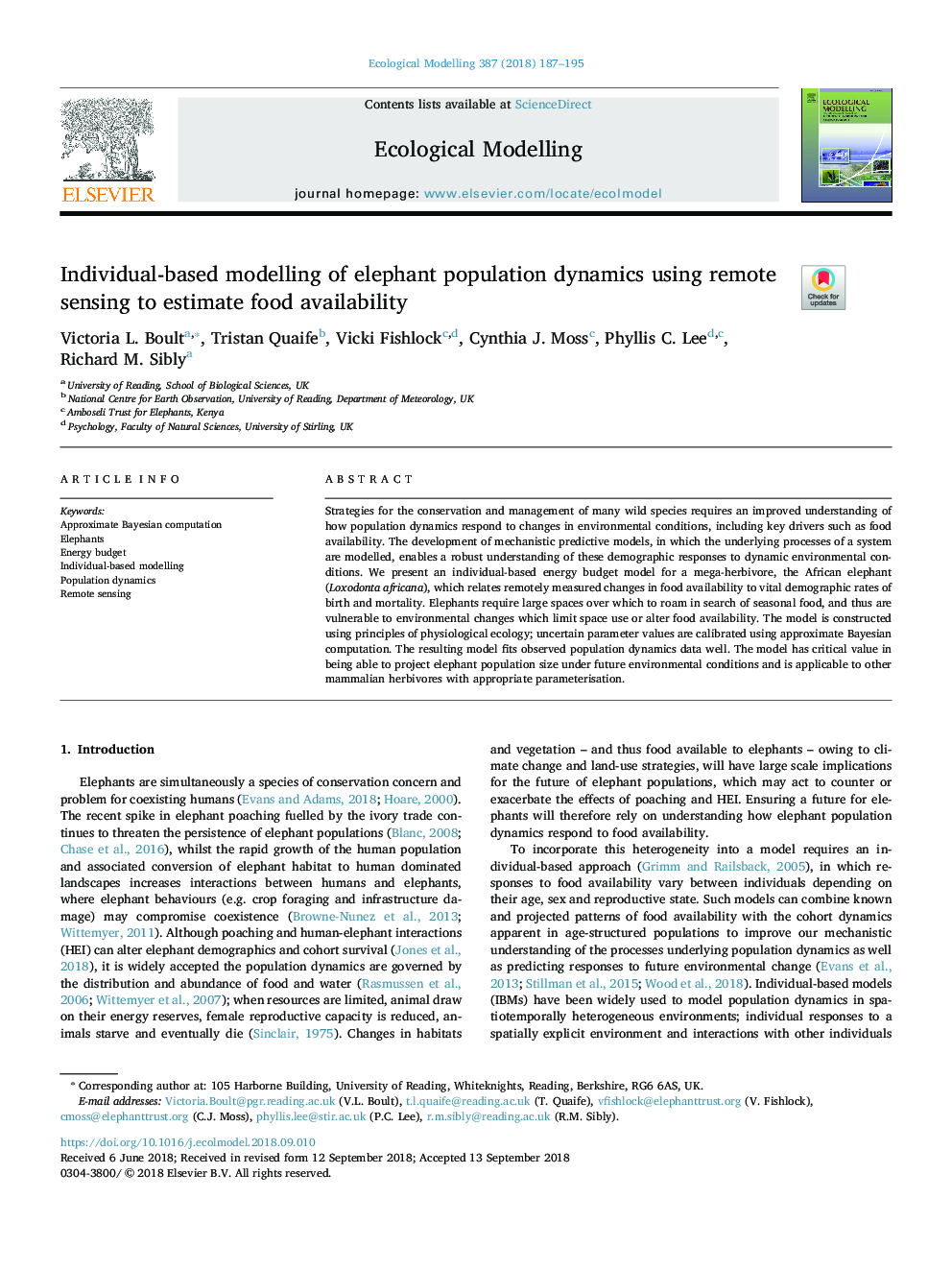| Article ID | Journal | Published Year | Pages | File Type |
|---|---|---|---|---|
| 11028712 | Ecological Modelling | 2018 | 9 Pages |
Abstract
Strategies for the conservation and management of many wild species requires an improved understanding of how population dynamics respond to changes in environmental conditions, including key drivers such as food availability. The development of mechanistic predictive models, in which the underlying processes of a system are modelled, enables a robust understanding of these demographic responses to dynamic environmental conditions. We present an individual-based energy budget model for a mega-herbivore, the African elephant (Loxodonta africana), which relates remotely measured changes in food availability to vital demographic rates of birth and mortality. Elephants require large spaces over which to roam in search of seasonal food, and thus are vulnerable to environmental changes which limit space use or alter food availability. The model is constructed using principles of physiological ecology; uncertain parameter values are calibrated using approximate Bayesian computation. The resulting model fits observed population dynamics data well. The model has critical value in being able to project elephant population size under future environmental conditions and is applicable to other mammalian herbivores with appropriate parameterisation.
Keywords
Related Topics
Life Sciences
Agricultural and Biological Sciences
Ecology, Evolution, Behavior and Systematics
Authors
Victoria L. Boult, Tristan Quaife, Vicki Fishlock, Cynthia J. Moss, Phyllis C. Lee, Richard M. Sibly,
